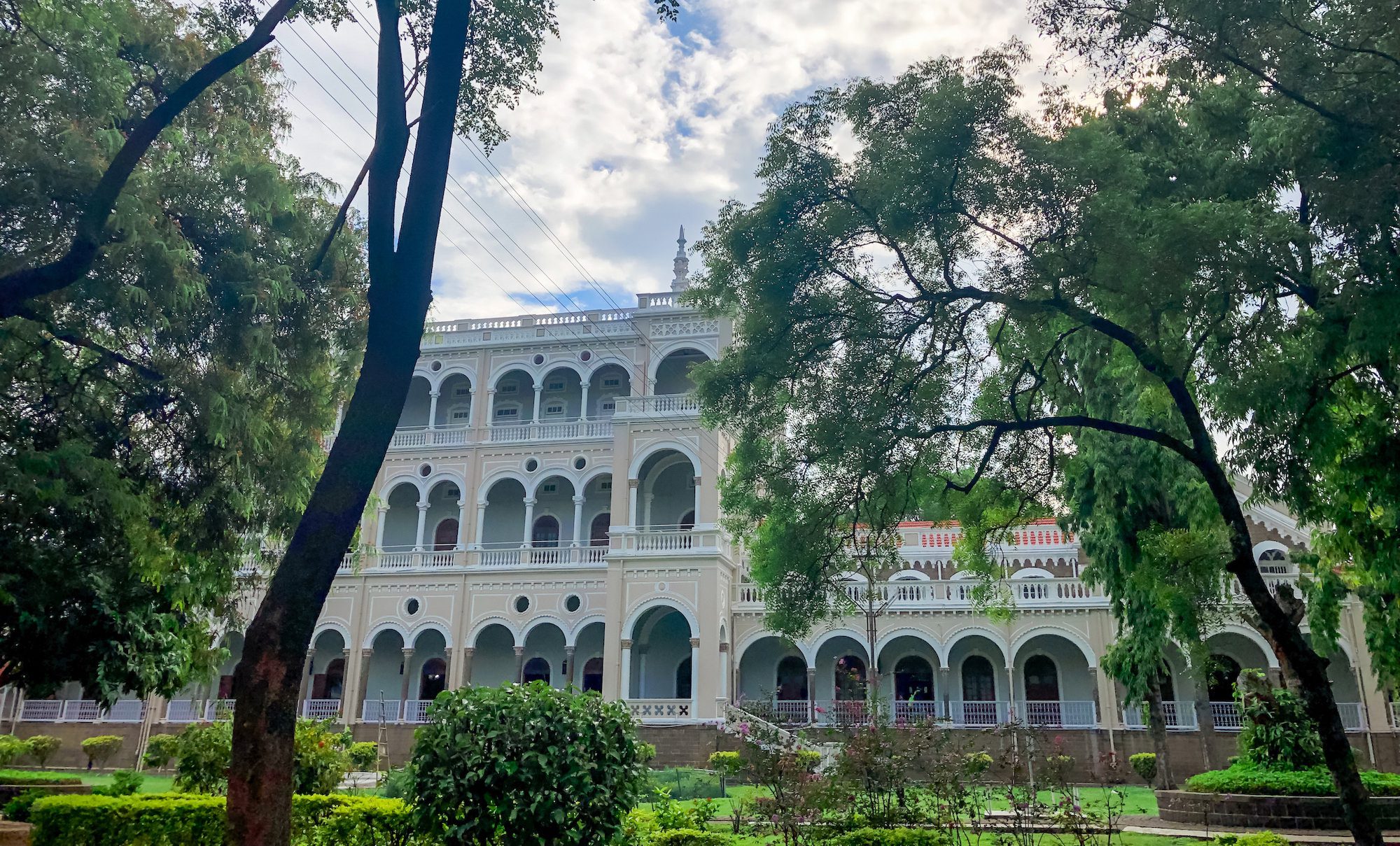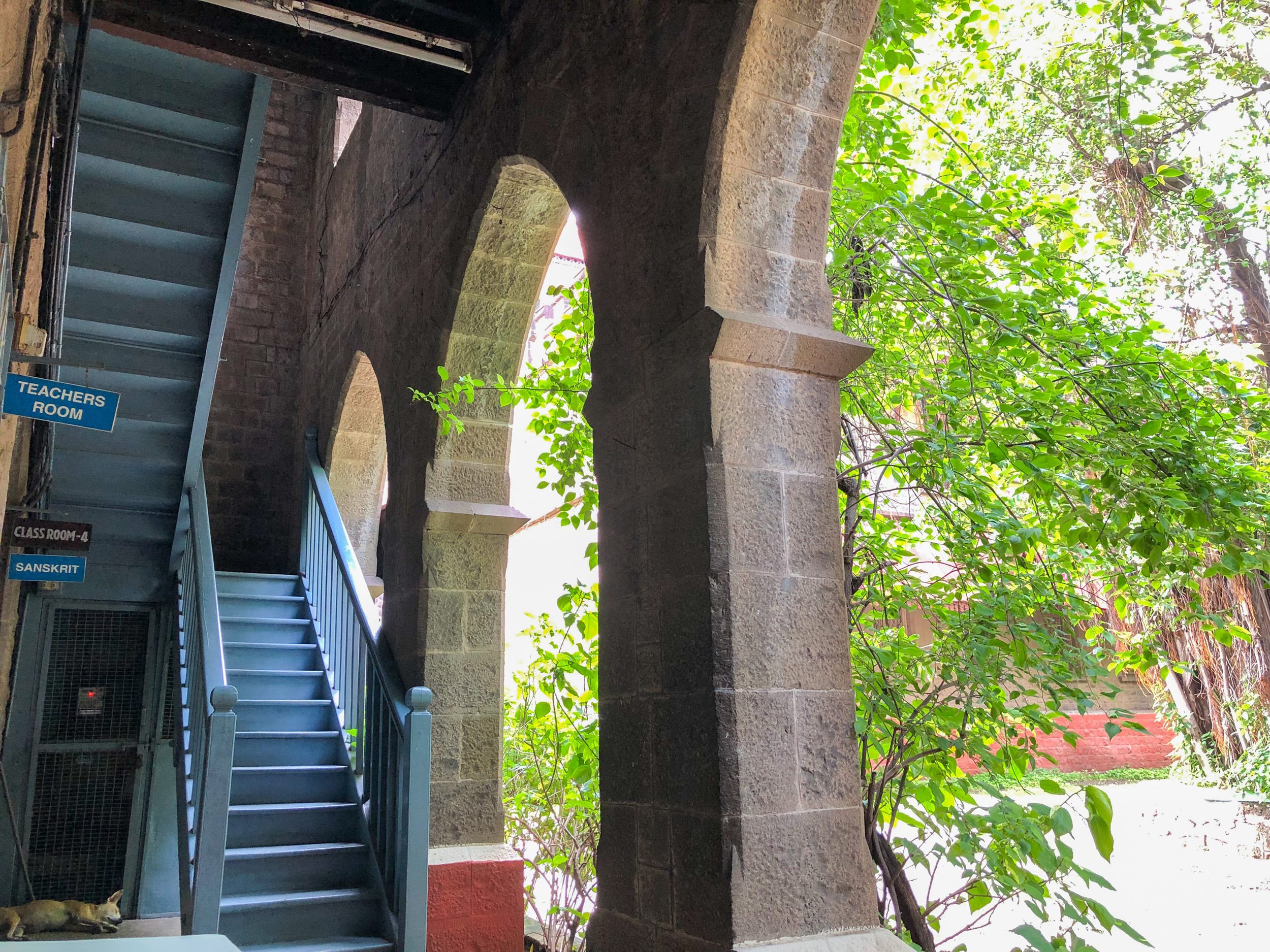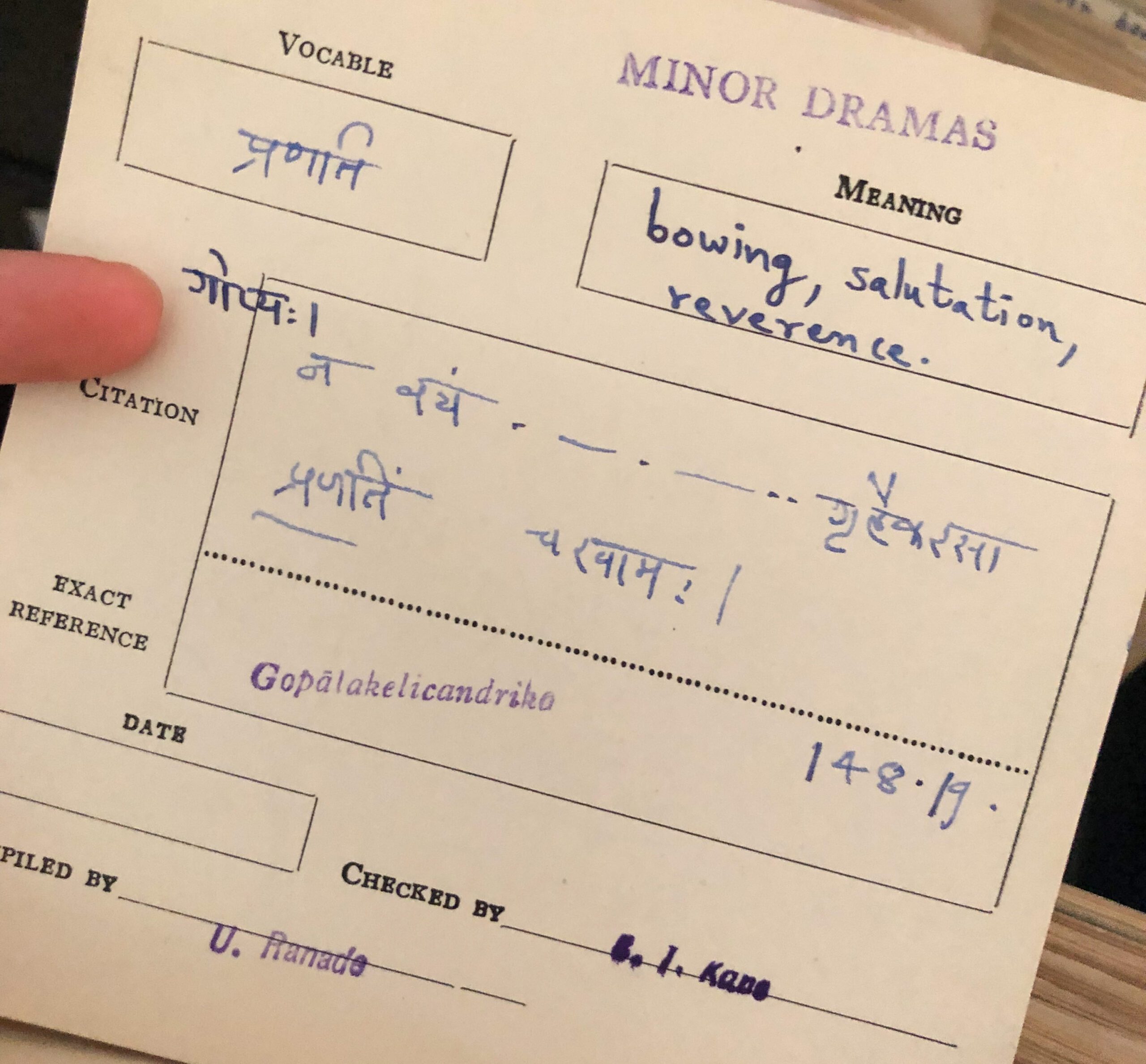By Pranati Parikh, Harvard College ‘21
This summer, I participated in the Sanskrit program in Pune, Maharashtra, offered by the American Institute of Indian Studies (AIIS). It surprised no one, I think, that I spent approximately ten weeks of my summer in India — a country to which I owe my cultural and religious heritage, a country which is home to people who look like me, who use similar blends of spices in their daily cooking, and from whose mouths spills a cadence of speech that echoes my own family. India is as familiar to me as my mother’s hands. And, yet, this summer was a glimpse into a new India. It was a time for appreciating granularities in a familiar topography and finding it splendidly unfamiliar at every step, yet, in the end, discovering a place for myself.
Pune is a beautiful place for an intensive program of Sanskrit study — unsurprisingly, because it is home to universities and postgraduate research institutes with exceptional expertise in the language, but also because the city itself brings together various disciplines and dispositions, the confluence of which perfectly represents the character and usage of Sanskrit in contemporary life. For instance, Pune is both Maharashtra’s cultural capital and its largest information technology hub. I stayed with a family whose members spoke predominantly Gujarati and Telugu, but studied under those who spoke Marathi and Hindi. I practiced speaking, reading, and writing every day in a language known for its ancient richness and erudition, studying romantic and epic poetry, light-hearted drama, and subtle, technical philosophy. But when the members of our program played Sanskrit charades, it was words like “cell phone” and “radio” that we acted out — words construed from an ancient tongue to give language to what humans in the world today need to say.
In addition to the versatility and relevance of Sanskrit in applications to all walks of life, the program opened my eyes to the language as a living form. Deccan Postgraduate Research Institute is the only institution in the world that is currently compiling an encyclopedic and historical Sanskrit dictionary of its kind, combining the study of Sanskrit with lexicography. Of course, it does not initially seem like the maintenance of a library and scriptorium of carefully curated Sanskrit manuscripts is anything more than a deep, dusty dive into the past. However, more than concretized definitions, the dictionary is devoted to tracing change in meaning over time, documenting each mention of a particular word over a selected corpus of upwards of some thousand texts. Lexicographical study, combined with deliberate and venerating attention to Sanskrit grammatical principles, thus reveals less of the rigidity often associated with Sanskritic traditions, and more of the fluidity and impressionable nature of the language.
The day that we toured Deccan College’s Scriptorium, I found out that the professor who had been personally tutoring me in the study of Kālidāsa’s Raghuvaṃśa was the director of the dictionary project. Greeting me as humbly and cheerfully as he did each Thursday and Friday, he proceeded to give the students of the program an overview of the project and its logistics, telling us all about the rounds of editing and review that each entry undergoes before it is finalized. More than seventy-five percent of the dictionary’s contributors are women.
In the scriptorium, I was determined — after enough trips to places like Disney World, where my name is never on a souvenir keychain — to find at minimum the verbal elements from which my name is derived. A fellow student dramatically pulled out his phone to record my “discovery of myself.” I was surprised to be allowed to open the small file drawers, to be able to sift through the cards with my bare hands, some of which are over fifty years old. But the project, and the language through its symbolism, is not one to be preserved in a museum for centuries hereafter. Such sustained interaction is not only possible, but encouraged.
I spent several minutes in a room that smelled of old books trying to find my name, before finally coming upon not one, but more than fifteen slips with my name handwritten on each, carefully documented by pundits. Although from a bygone era, they had likely also studied the same texts that I had this summer in Pune. So, I learned various meanings of the word pranati, chronologically ordered and cited on yellowing slips of paper, signed by those enamored with the language I had been given the opportunity to study: namaskāra, salutation. Surrendering. To beg one’s pardon. Obeisance, bowing, reverence. It was as if voices in fading blue and black ink were speaking my name.
I don’t think that discovering my name in a Sanskrit lexicographical archive was the same as discovering myself. Neither was it a moment of realization after which I knew with a conviction that it is my life’s calling to study Sanskrit. No, I had decided to study Sanskrit a few years prior, and the requisite experience to apply to the program was at minimum two years of Sanskrit study. But my summer in Pune was a reminder that what we know can be made anew, and must be made so for it to thrive.
Perhaps the best example of this is the story of the Raghuvaṃśa itself, which, while related to the Ramayana, is more a purview of the Raghu family lineage. I read from the Raghuvaṃśa a chapter about Dilipa, and the boon he received from the celestial cow, Nandini, to have a son — Raghu, who would be Rama’s great-grandfather. The chapter is riveting and the poetry brilliant. Again, however, the story of the Ramayana and its moral imports became, through the opportunity to study in Pune, freshly contextualized and relevant through perspectives I had not considered. The near-martial firmness on matters of righteousness often derived from the Ramayana is now bolstered, in my mind, by an eye for beauty, a favoring of compassion and mercy over justice, a reverence of the feminine, and a willingness to take seriously what seems magical and surreal.
Living in Pune this summer with people who demanded the best of me — academically and socially — has made yet another lesson possible in the long line of those which constitute a liberal arts education. India, I have learned, is not an insular place that I can associate in my mind with a simple imagination of the homeland. It is a place where people like me can critically engage with differences in both people and opinions, and a place to embrace unfamiliarity and the beauty it brings. I am grateful to AIIS, to the Mittal Institute, and of course, to those who continue teaching Sanskrit and its relevance to the current state of the world and its inhabitants.
Parikh’s Sanskrit studies in India were funded by both AIIS and the Lakshmi Mittal and Family South Asia Institute. All photos taken by Pranati Parikh.




